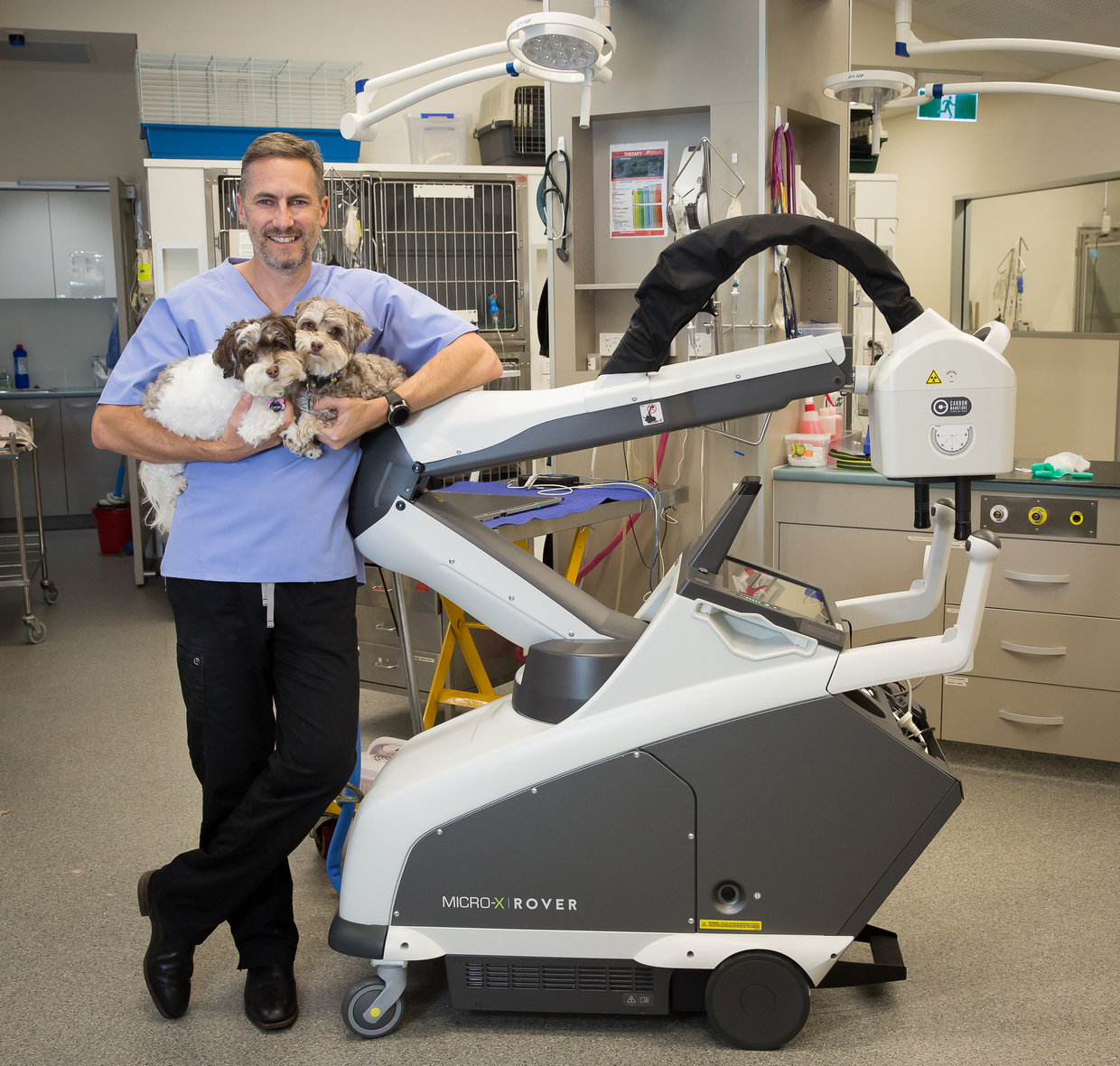 | | Walk through the decades with Dr. Steve | | | Is being a vet just possibly one of the best jobs in the world!?!
At the end of last year I made the trek to Melbourne for a weekend to catch up with friends from vet school for dinner. The occasion was our THIRTY year reunion! Where on earth did that time go? It was great to see so many of my year level still in practice all these years later and enjoying their jobs despite being spread far and wide across the globe.
I was seventeen when I left home for Victoria’s big capital to start my studies and embark on a career of caring for animals. When I graduated and returned to Adelaide to work there were no specialists here at all and there were only whispers and rumours that one day the University of Adelaide may start a vet school itself out at their Roseworthy campus.
The north of Adelaide was full of suburbs of houses on big blocks of land and pet owners were people who had a dog in the back yard and sometimes a cat……somewhere…., probably, wandering around the suburb and occasionally dropping home for some food.
Just like now, our pets got into all sorts of mischief and there was always a steady stream of accidents and illnesses to deal with. Pets being bitten by snakes, hit by cars, or getting into fights with each other or the occasional lawn-mower, drinking car coolant, eating the fat off BBQs, grass seeds in every possible orifice, and of course the Labrador puppy that ate a tennis ball, then some rope, then a pair of kid’s Power Rangers undies.
It was such a pleasure to be able to fix these animals up and sort them out and send them on their merry way …until the next time! And to see them grow and get older and in that time to get to know their wonderful owners as well. It’s a team game, helping animals, because there is only so much we can do at the clinic and then the rest happens at home. Working out how we together give the best care is a great part of the job.
And pet ownership has definitely changed over the years. Never heard the term “fur-baby” back in the 90s when we were wearing Levi 501s and white T-shirts with vests over the top (they will come back soon I’m telling you!) nor the description of “helicopter parents” of new puppies which is a gorgeous description of just how much some of us adore our little four-legged friends. No longer roaming the realms of the suburban back-yard all night, many of our pets sleep on the bed (if not in the bed!) and as society we have embraced the positive impacts of having pets that provide companionship and unconditional love in our otherwise crazy worlds.
And being part of this journey as a vet has been an absolute privilege. The scope of treatments that we are able to provide has increased immensely and when I walk along our pharmacy and glance at the shelves I can’t help but notice the incredible number of medications that had not even been discovered, developed or released back in the days that I was studying pharmacology at vet school (–don’t worry, I’ve been sure to learn what they are and what they do, it’s been one of the fascinating parts of being a vet over the past few decades).
Just last week Gawler and Districts R-12 School invited us to be a part of their careers expo for their students exploring different industries and professions and one of the most frequent questions the students asked me was “What is the best thing about your job?”. Loving animals, the obvious answer would be working with animals, playing with them, treating them and fixing them when they are unwell….which is all true, but I also found myself saying that from the point of view of a career, it is incredibly INTERESTING. After thirty years I still never know what to expect day to day. I see interesting animals, interesting cases and get to meet and chat with wonderfully interesting people.
Veterinary medicine and surgery continues to evolve at such a rapid rate and we are continually learning, which I also find incredibly interesting. I work with an incredibly devoted, skilled and knowledgeable team and even rubbing shoulders with them as we work together is just so interesting. And above all, animals keep everything interesting!
And layer on top of that how affirming it is to be entrusted with the care of people’s much-loved pets and how fulfilling it is to be able to provide that care creates a great sense of meaning with the opportunity to make a real difference.
So who knows, some people may think there could be nothing worse than dealing with blood, and smells, and mess all day … but for me, I think that being a vet may just possibly be one of the best jobs in the world! |
|
|
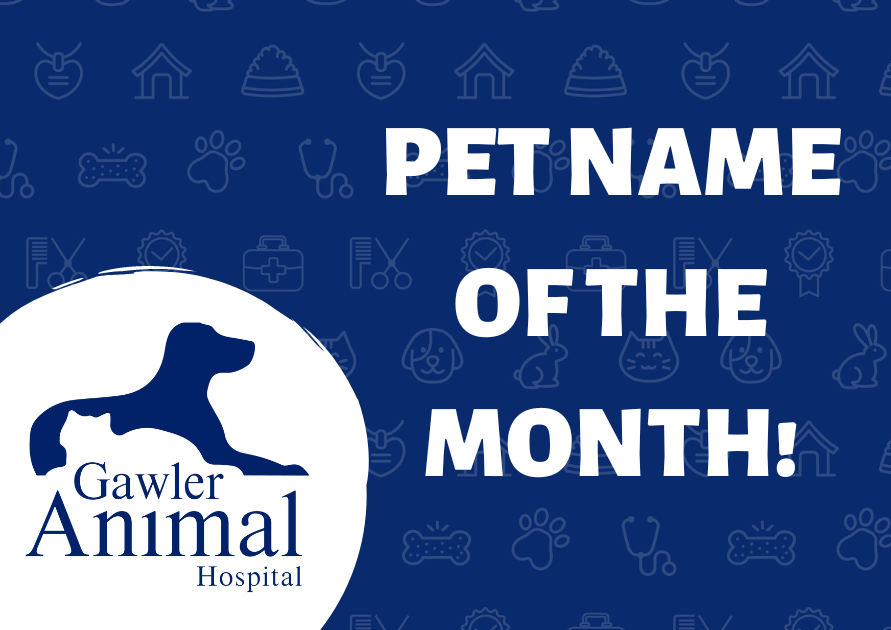 | | Pet Name of the Month | | | Thankyou everyone for voting on April nominations, we had fantastic names come through and some tight competition between them as always.
The winner for April is ‘Gustavo the Daschund’.Congratulations and please pop into the clinic to collect your coffee voucher.
Please hit the link below for "Pet Name of the Month May"
Pet Name of the month May |
|
|
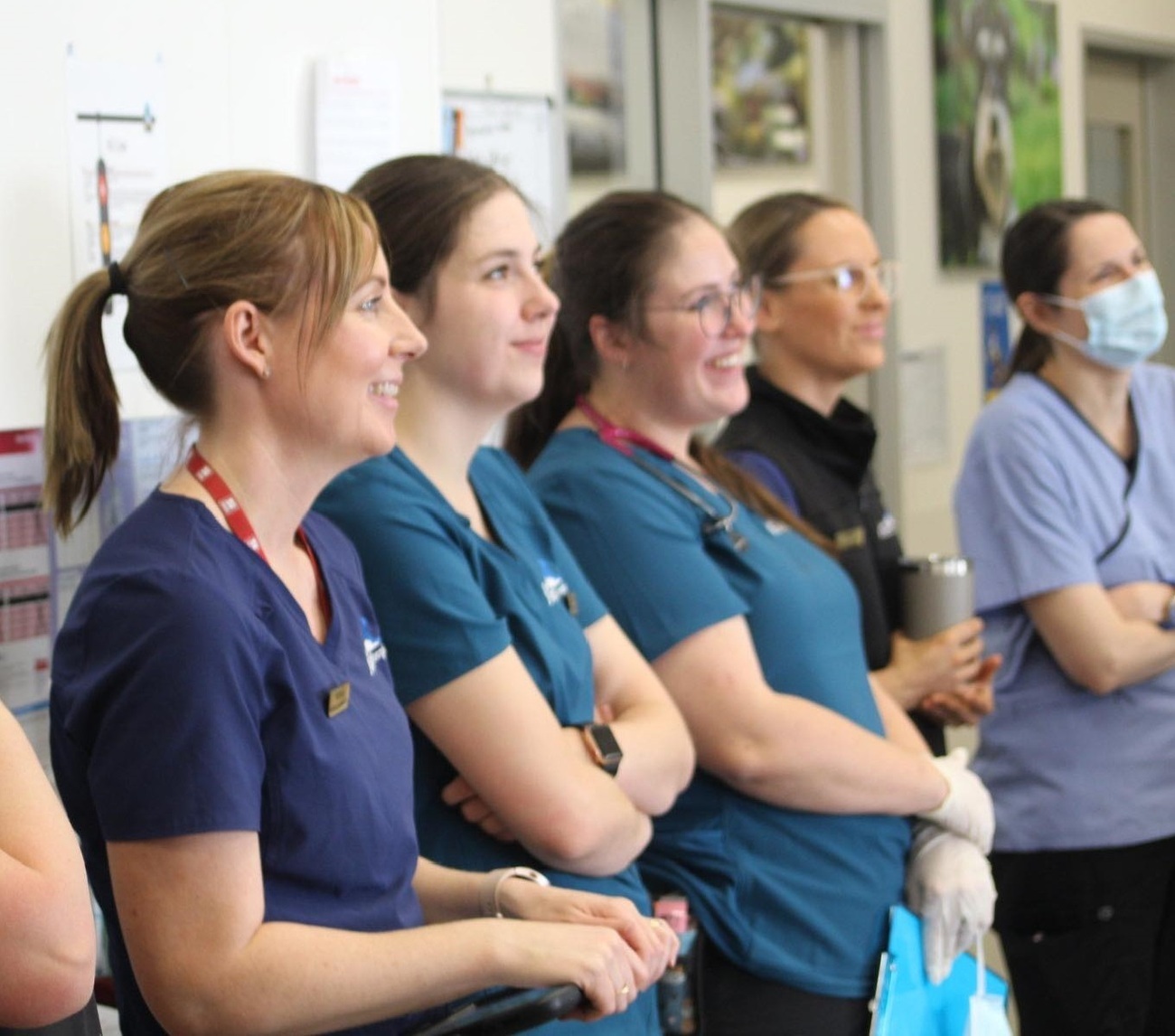 | | Three cheers for veterinary nurses! | | | We’d love to raise a cheer for all the amazing veterinary nurses out there! Here are just some of the ways veterinary nurses help to ensure the best care for our furry patients:
1. Technical know-how: In supporting our veterinarians, our experienced veterinary nurses assist with a variety of diagnostic and treatment activities, such as running the blood test machines which give us vital information about a pet’s organ function, hydration status, and markers of inflammation.
2. Caring customer service: Feeling concerned about your pet, or just wanting some general pet health care product information? Our knowledgeable veterinary nurses will field your initial phone call or greet you at the front desk, offering experienced advice and emotional support.
3. Premium patient care: If your pet is admitted into the hospital, our veterinary nurses will provide them with gentle TLC, keeping them clean, comfortable, toileted and fed. The veterinary nurses will often administer medications prescribed by the vet, and perform regular checks to monitor your pet’s basic health parameters and progress.
4. Timely triage: In an emergency, a veterinary nurse will often perform the initial triage assessment of your pet, involving a basic examination to rapidly determine the severity of your pet’s illness or injury – this helps us gauge whether your pet requires emergency care or other further treatment.
5. Vital monitoring: Whilst vets are performing surgery or dentistry, a veterinary nurse will be constantly monitoring the pets’ breathing, temperature, heart rate and other parameters to ensure that the pet’s anaesthetic runs as smoothly and safely as possible.
6. A-class animal handling: Unfortunately, our animal patients don’t always understand that we’re trying to help them! Veterinary nurses have great animal handling skills to facilitate gentle and low-stress handling of your pet during veterinary treatments.
With these skills and more, it’s safe to say that our amazing veterinary nurses are an integral and valuable part of our team. |
|
|
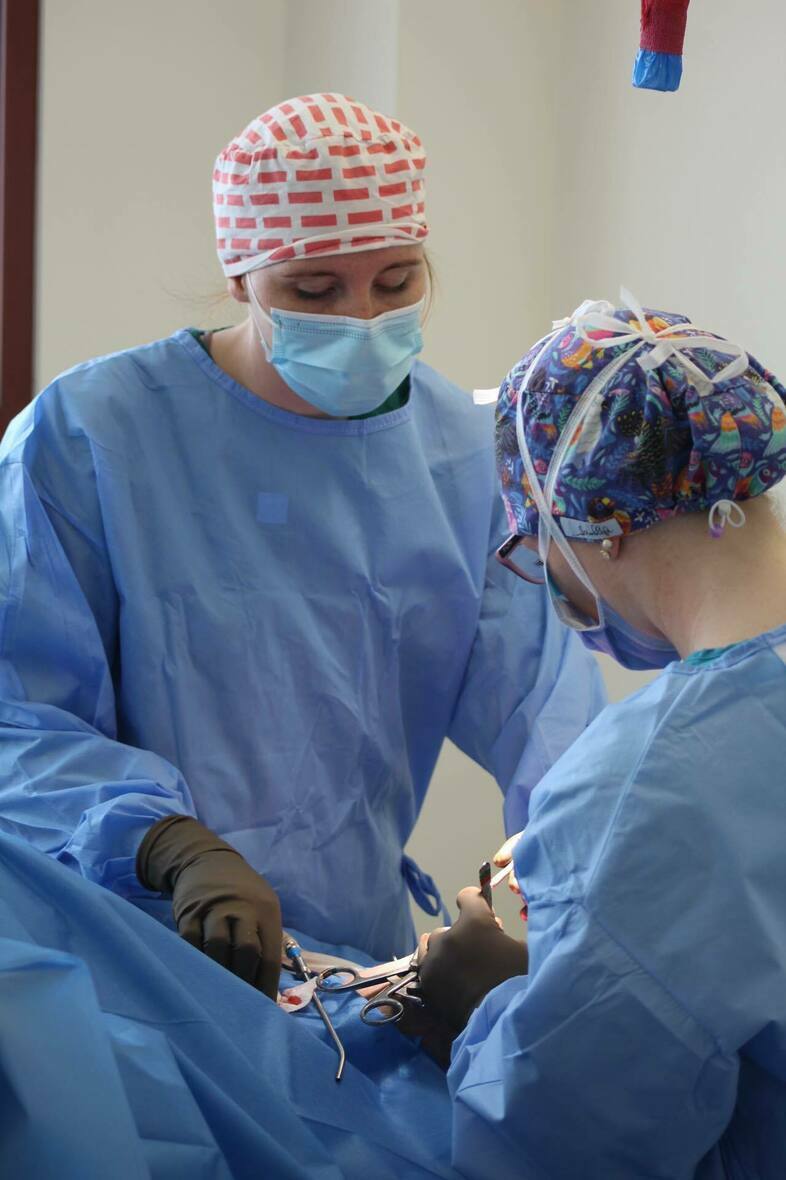 | | Spey surgery explained | | | With 80-90% of dogs, and over 90% of cats being routinely desexed in Australia, the majority of female pets will undergo a spey (female desexing procedure) at some point in their life.
Let’s shed some light on the technical details of this intricate surgical procedure and discuss how our team and pet owners can help ensure a smooth recovery for speyed pets.
What does a spey surgery involve?
The traditional spey surgery in Australia involves an incision through the midline of the pet’s belly to allow the veterinary surgeon to locate and tie off all attached blood vessels (to prevent bleeding) before removing the pet’s ovaries and uterus. The vet then closes up the pet’s abdomen using several layers of dissolving sutures.
How vets and nurses work together during surgery
During a spey surgery, a vet and veterinary nurse will work together to place the pet under general anaesthetic. The vet will then perform the surgery whilst the nurse monitors and maintains the ongoing anaesthetic (under the direction of the vet). The nurse also monitors the animal’s heart rate, breathing, body temperature, and other parameters such as blood pressure, to help ensure the safest procedure.
Pets will be prescribed several modes of pain relief, both during the spey surgery and post-operatively, to help them recover as comfortably as possible.
How you can help ensure a smooth recovery for your pet
To help your pet recover, we would advise:
- Administer pain relief according to the labelled instructions. If you feel your pet requires more pain relief, contact our team.
- Keep your pet rested for at least 10 days post-operatively. For dogs, this involves on-lead toileting walks only, whilst cats should be kept in a confined area to limit their activity.
- Check your pet’s wound daily, and contact our team if you notice any discharge or increased swelling.
With our care during the spey surgery and yours after, we can help ensure that your pet’s recovery is a walk in the park. After all, a stitch in time saves nine (more puppies). |
|
|
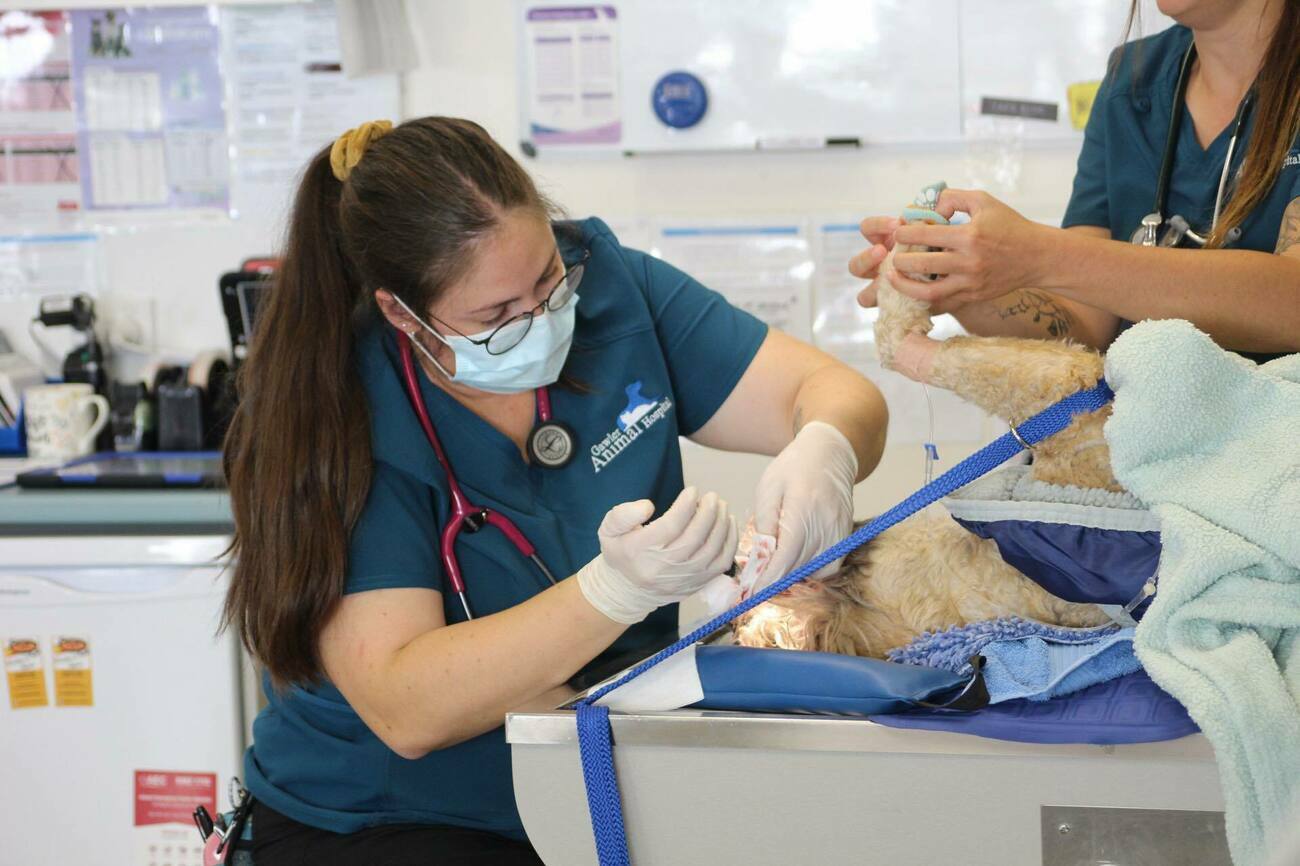 | | A one-stop shop for your pet's veterinary care | | | Among the many things we love about being in the veterinary profession is the variety and quality of medical and surgical assistance that we’re able to offer to our patients and clients.
Here are just a few of the awesome skills and services that veterinary hospitals can offer, all within one building.
Consultations
Many veterinary consultations involve routine annual health checks and vaccinations. We also commonly see animals who are unwell with skin or ear disease, stomach upsets, or chronic health conditions.
As well as performing GP-type consultations, vets also provide emergency care for injured or unwell pets.
Pharmacy
Our veterinarians are able to prescribe medications, which means that pets can start their treatment as quickly as possible, which is convenient for pet owners too!
Imaging
Whilst humans may need to visit a specialist location for their x-rays, veterinary patients can usually undergo x-ray, and sometimes ultrasound imaging, on-site to facilitate a more rapid diagnosis of their condition.
Laboratory facilities
Most veterinary clinics offer an array of on-site diagnostics, including blood and urine testing capabilities, and the ability to analyse fine needle biopsy samples under the microscope for an initial assessment of lumps. This can provide answers to worried pet owners faster - often on the same day!
Surgery and dentistry
As well as their other technical skills, veterinarians are experienced in routine soft tissue surgery and dentistry, with some having the ability to perform orthopaedic surgical procedures as well.
This holistic approach to patient care usually means faster diagnostics, assessment and treatment, and greater convenience for pet owners. Veterinary clinics really are one of the ultimate one-stop shops!
Whether their needs are routine, surgical, medical or something else entirely, our experienced team is fully-equipped to keep your pet healthy and thriving. Please call us if you have any questions about our range of services. |
|
|
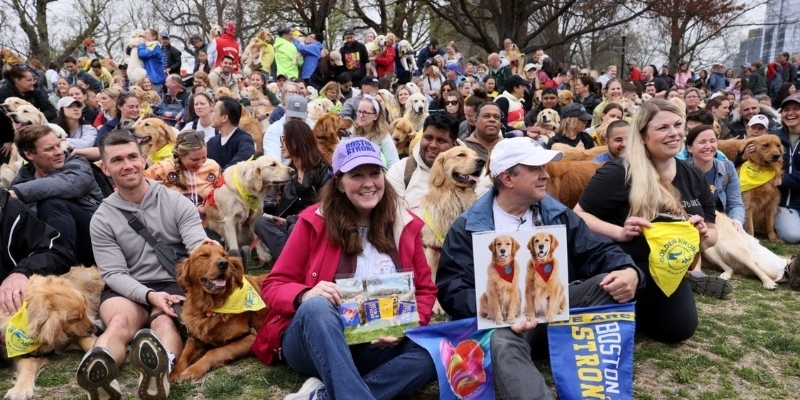 | | Animal News In Brief | | | Golden retrievers march down Boston streets in memory of Spencer
The streets in Boston were paved with gold recently - golden retrievers that is! Over 100 golden retrievers and their owners took to the streets of Boston’s CBD in remembrance of Spencer, the official mascot of the Boston Marathon. A fixture of the iconic sporting event for many years, Spencer the golden retriever could be seen standing on the sidelines (with sister Penny), determinedly supporting every athlete until their race was run. But it was a viral video of the 2018 marathon that made Spencer famous, showing the plucky pooch holding two ‘Boston Strong’ flags in his mouth and wearing a raincoat, completely undeterred by the stormy weather that drenched the other spectators that year. In 2022, Spencer was named the official dog of the 126th Boston marathon, but sadly Spencer and Penny both passed away from cancer in February. In honour of their memory, and Spencer's positive contribution to the marathon, Spencer’s title as marathon mascot has been extended in perpetuity. Local dog-lovers group, MA Golden Meetups, organised the commemorative event that saw golden retrievers take over downtown. “I think I can safely say Spencer and Penny affected millions at this point,” said Spencer and Penny’s owner, Richard Powers. “I just want him to continue to offer inspiration -you can do more than you think you can.”
To read more about Spencer and Penny’s sporting spirits, read the full article by The Boston Globe.
Photo Credit: Jessica Rinaldi/Globe Staff
Gilbert, the emergency ward therapy dog
Once trained for Guide Dogs Tasmania, black labrador Gilbert didn’t make the cut due to problems with his hind legs. However, due to his lovely nature, Guide Dogs Tasmania sought another opportunity for Gilbert to serve the state. That’s how Gilbert became Australia’s first-ever ‘emergency ward dog’. Since 2021, he’s been stationed on the ward at the Launceston General Hospital, and has become a popular four-legged figure among staff and visiting patients. "We saw he had an amazing ability to calm people down, to make children, in particular, feel a lot more comfortable," said Kim Ryan, program manager at Guide Dogs Tasmania, “He's very quick to pick up emotions, so he'll interact with someone if he feels they're having increased anxiety or worry.” But after firmly positioning himself as top dog of the emergency ward, it’s now Gilbert who needs some extra love and care, after having surgery to repair a torn ligament on his hind leg. “So many people have reached out and wished him luck with his recovery,” said Ms Ryan. “It's a bit of a long journey to get him to build that leg back up again”. Gilbert will spend a few months recovering at home, attending rehabilitation and hydrotherapy sessions to help strengthen his legs so that he can return to what he does best: making his rounds on the ward. Go well Gilbert!
To find out more about Gilbert’s work at the Launceston General Hospital, read the ABC News article.
Meet the dog who crossed the Alaskan sea all by himself
Every parent and carer understands the stress of losing a little one in a public place, but can you imagine if your one-year-old wandered off only to turn up on the other side of a small ocean? Not so long ago, Nanuq, the one-year-old Australian Shepherd, and his sister Starlight went missing from the Iworrigan family home, on the island of Gambell, Alaska, USA. Starlight would be found hanging around a neighbour’s yard a few weeks later but Nanuq seemed to have vanished without a trace. It wasn’t until reports began circling of a lost dog spotted in the mainland Alaskan town of Wales, that Mandy Iworrigan started to suspect Nanuq might be back on the radar. “My dad texted me and said, 'There's a dog that looks like Nanuq in Wales’, I was like, 'No freaking way! That's our dog! What is he doing in Wales?’,” said Ms Iworrigan. Whatever Nanuq was planning to do in Wales, the real question was, with a boggling 266 kilometres of ocean between Gamble and Wales, how on earth - or water, or ice tundra, or perhaps a passing alien spaceship - did Nanuq manage to make the crossing? “I have no idea why he ended up in Wales. Maybe the ice shifted while he was hunting,” Ms Iworrigan said. When Nanuq was reunited with his family, the only clue he carried from his recent adventure was a large bite mark on his leg. “Wolverine, seal, small [polar bear], we don't know,” Ms Iworrigan said. "I'm pretty sure he ate leftovers of seal or caught a seal. Probably birds, too. He eats our native foods. He's smart.”
Read The Guardian’s article for more details surrounding Nanuq’s travels. Perhaps you’ll be able to solve the mystery of his trans-oceanic adventure! |
|
|
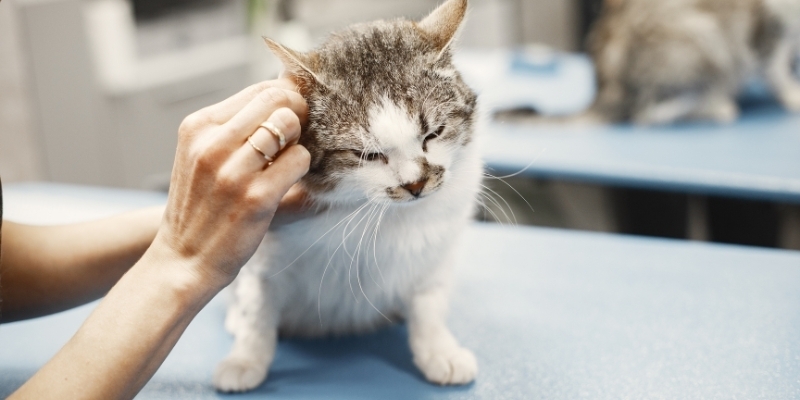 | | The DO’s and DON’Ts of pet medications | | | Did you know that up to 40% of human medical patients don’t take their own medication correctly as prescribed? Unfortunately, this incorrect dosing may cause the medication to be less effective, or even harmful.
Whether your pet is taking a short course of antibiotics, or is on regular medication to manage a long-term health condition, here are the DO’s and DON’Ts for safely administering their treatment:
DO:
- Administer the medication as directed.
Read your pet’s medication label carefully to confirm the dose and frequency required, and how the medication is administered (e.g. by mouth). To ensure correct dosing, consider writing up a calendar (with boxes to tick off), or purchasing a daily pill organiser box from a pharmacy (which can also help prevent accidental double-ups from different family members dosing your pet).
- Confirm any special requirements for the medication (such as administering with food) and potential side effects to monitor for.
Our vets will discuss this information with you at the time of consultation. To remember any particularly important details, write a summary in your phone notes app during or shortly after your pet’s appointment, or ask our vets to write or email you a short summary of your pet’s treatment plan.
DON’T:
- Change the dosage or frequency of your pet's medication without veterinary approval.
As discussed above, incorrect dosing can be harmful to your pet, particularly in the case of anti-inflammatory pain relief medications and many others. If you feel your pet is still in pain or otherwise not doing well with their treatment, phone our regular team (or after-hours service) to discuss the safest course of action.
- Administer any leftover medications without veterinary approval. Combining certain medications or using medications not prescribed for your pet’s current condition can potentially cause harm. Always clarify these details with our vets to ensure the safest treatment.
For personalised advice in regard to your pet’s medication, contact our helpful team! |
|
|
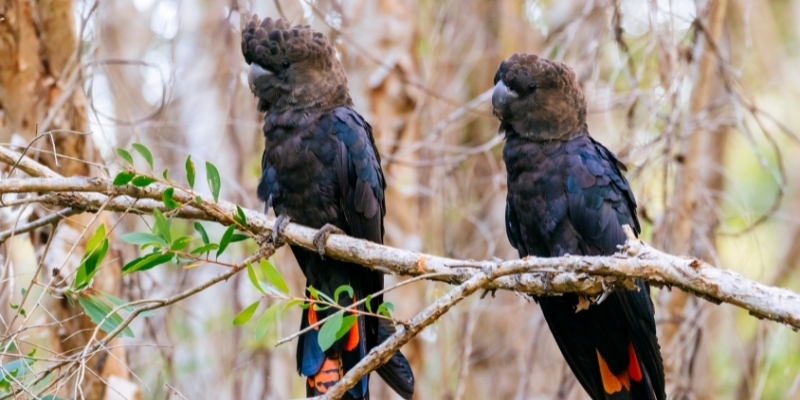 | | Farmers come together to protect the future of vulnerable cockatoos | | | If you’re living in Australia, you know how hard it is to miss the loud squawking of our cockatoos, and how sorely missed this iconic and outlandish species would be if they were to go extinct. But worryingly, the possibility of life without the elegant glossy black cockatoo is becoming more and more likely. Numbers have plummeted in recent years, from the tens of thousands to somewhere around eight thousand wild birds across the country. But why?
For starters, around the world the glossy black cockatoo has been gaining popularity as an exotic black market pet, leading to a rise in poaching efforts by illegal animal traders. For any bird lucky enough to escape the poachers, there’s the problem of finding food. To make matters worse, the species’s singular food source is getting harder and harder to come by, with large numbers of native ‘she-oak’ trees decimated by bushfires, as well as by historic land clearing for farming purposes. But there’s hope yet, as farmers band together to plant native grasses and over 1000 she-oaks, restoring the native species to their properties, and creating safe habitats for native animals, including 45 nesting boxes for the glossies. “The opportunity is here to plant some trees strategically to have a critical mass that will support them through the breeding season,” said Phil Diprose, a local farmer who recently restored several native species to his property. Tracee Bourke of Mid-Lachlan Landcare has been assisting the farmers with their revegetation efforts. “Getting some more feed trees in, in the right places is so important. It adds to the value of their farms, it adds to the productivity to get trees growing within the farms," said Ms Bourke.
To read more about efforts to protect the glossy black cockatoo, visit ABC News. |
|
|
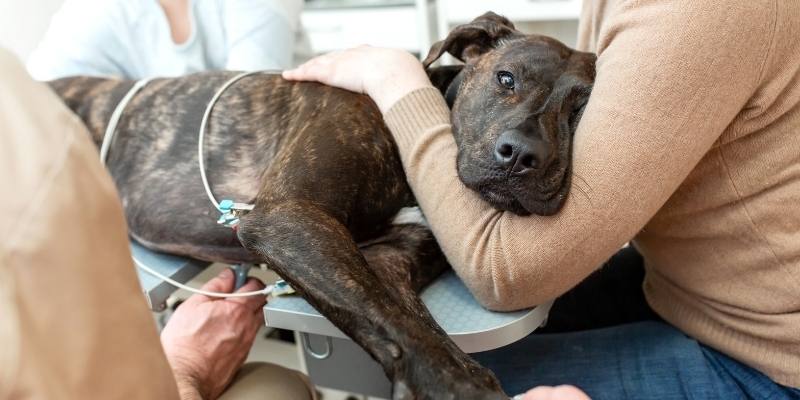 | | Professional punctuality | | |
Our team does our very best to stay on schedule, but unfortunately, we may run late on occasion due to the inherent unpredictability of veterinary work.
Here are three reasons why we might not always be on time for your appointment:
Emergencies
Common emergencies include cases of severe trauma (e.g. a pet getting hit by a car), cats with blocked bladders, or pets with breathing difficulties.
In these situations, the vet is required to immediately attend to the emergency case to stabilise the animal’s condition, before proceeding immediately with further diagnostics and treatment.
Triage of unwell pets
Common unwellness cases which may need to be prioritised ahead of pre-booked appointments include pets with dog fight wounds, or pets with severe gut upset.
These cases generally require a rapid assessment, followed by supportive medications or pain relief, and further diagnostic testing and treatment as soon as possible.
Unpredictable appointments, surgeries or anaesthetics
It is not uncommon for our team to be held up whilst treating extremely fearful pets who require an extra slow approach or even some calming medication.
On occasion, our daily surgical procedures may also run overtime due to unexpected additions or changes in our hospital caseload.
Whilst we understand that it can be frustrating to have to sit and wait for your pet’s routine appointment, we know that every owner would want their own beloved pet prioritised if they were suffering from a severe injury or illness requiring urgent treatment.
Please let our team know if you have any time limitations when booking or attending your pet’s appointment, and we will do our best to offer solutions if we happen to be running late. Otherwise, we appreciate your patience!
|
|
|
This email contains comments of a general nature only and is not intended to be a substitute for professional veterinary advice. It should not be relied on as the basis for whether you do or don't do anything.
All content © PetPack 2022 |
|
|
This email was sent to:
email@example.com
Gawler Animal Hospital
76 Adelaide Rd
Gawler South, SA 5118
|
|
|
|